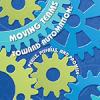The Latest
 |
The Real Key to Agile Success: Communication[article] Think about the common practices of an agile team: daily stand-up meetings, retrospectives after every sprint, pair programming and buddy reviews, collaborating with customers, and more face-to-face time instead of mountains of documentation. What is the agenda behind all these operations? Frequent and open communication. |
|
 |
How Being Agile Can Maximize Your Return on Investment[article] There is more to calculating ROI than a simple equation. It can be affected by risk, time, and other factors—including whether your team is agile. Releasing software immediately after coding and testing accelerates feedback cycles, minimizes the cost of delay, and increases return on investment. Allan Kelly tells you how. |
|
 |
Do Cross-Functional Teams Mean Cross-Functional People?[article] Managers who want high-performing agile teams may think this involves finding people who all possess every required skill. But in addition to that being unlikely, it would also be a bad idea; it's the mix of perspectives that really gives benefit and value to the business. Instead, find experts in individual skills who can collaborate well together. |
|
 |
Pair Writing across Time and Space[article] Much like in pair programming, working with a partner through pair writing provides increased support and valuable immediate feedback. But there are additional obstacles when you and your partner are not collocated. Here are some tips on how you can still implement pair writing successfully when you can't collaborate in person. |
|
 |
Organize Test Activities under a Test Center of Excellence: STARWEST 2015 Interview with Wim Demey[interview]
Video
In this interview, TechWell speaks with Wim Demey, a solution architect working for CTG Belgium. At STARWEST, he gave a presentation titled "Take Your Test Center of Excellence to the Next Level with ITIL." |
|
|
|
Playing Games to Improve Software[magazine] You may not have heard about gamification, but instructional designers are now using game principles to help with retention of learned material in many forms of training. Ross Smith and Rajini Padmanaban believe that developers' UX and app design can benefit from gamification. |
|
 |
What Improv Can Teach You about Agile Success[article] In both improv and agile, there is a tight-knit community where everyone can explore possibilities and feel free to innovate. Without that community, there can be no trust or collaboration. Travis Klinker tells you how success in both improv and agile means exemplifying transparency, adaptability, and unity. |
|
|
|
How to Assess and Improve DevOps[magazine] DevOps can take substantial effort to successfully implement, according to Bob Aiello and Leslie Sachs. By understanding existing development and deployment practices, you'll be able to properly assess the best steps to transition to an outstanding DevOps environment. |
|
 |
The Effect of Time on Value in Your Agile Projects[article] Using effort estimates as the only criteria for deciding whether work is undertaken could be leaving money on the table. Considering value—in particular, the effect of time on value, as in whether there is a cost of delay—makes for more intelligent conversations and better decisions. |
|
 |
People Should Think and Machines Should Test[magazine] Testers often develop programmatic tests that mimic manual test conditions. Harry Robinson and Doug Szabo use real programming examples to show how the computer can provide better test coverage than the test author conceived. |
|
 |
Using Agile Application Lifecycle Management to Streamline Status Accounting[article] Status accounting is following the evolution of a configuration item through its lifecycle. Using application lifecycle management along with agile helps prevent mistakes, but lets you have the minimum amount of red tape; the team achieves an acceptable velocity without being unduly burdened with too much process. |
|
 |
Simplify Your User Stories: Make Them Independent[article] Writing independent user stories seems simple, but it is actually difficult to do well. There are often parts of some stories that are dependent on other stories' functionalities, so it's not easy to keep them separated. Kris Hatcher relates how his team wrote and scored stories to keep them independent but still meeting acceptance criteria. |
|
 |
Moving Teams toward Automation: Perils, Pitfalls, and Promise[magazine] There is no magic bullet to create an effective test automation environment. But Steve Gibson believes that creating a test automation vision, adopting metrics, and delivering value throughout a project lifecycle puts an organization on the right path. |
|
 |
Implementing Agile Approaches in the Public Sector[article] In the public sector, a change in standard processes and procedures requires significant effort and, often, approval from external vendors and elected officials as well as internal stakeholders. To get buy-in to become agile, you have to utilize all Scrum tools at your disposal to show the value of the proposed agile process. |
|
 |
Improve Agile Quality—Three Pillars at a Time[magazine] A key component to being agile is the adoption of testing from the very inception of the project. According to Bob Galen, to achieve a high degree of quality assurance, there needs to be a careful balance among development and test automation, software testing, and cross-functional team practices. |













